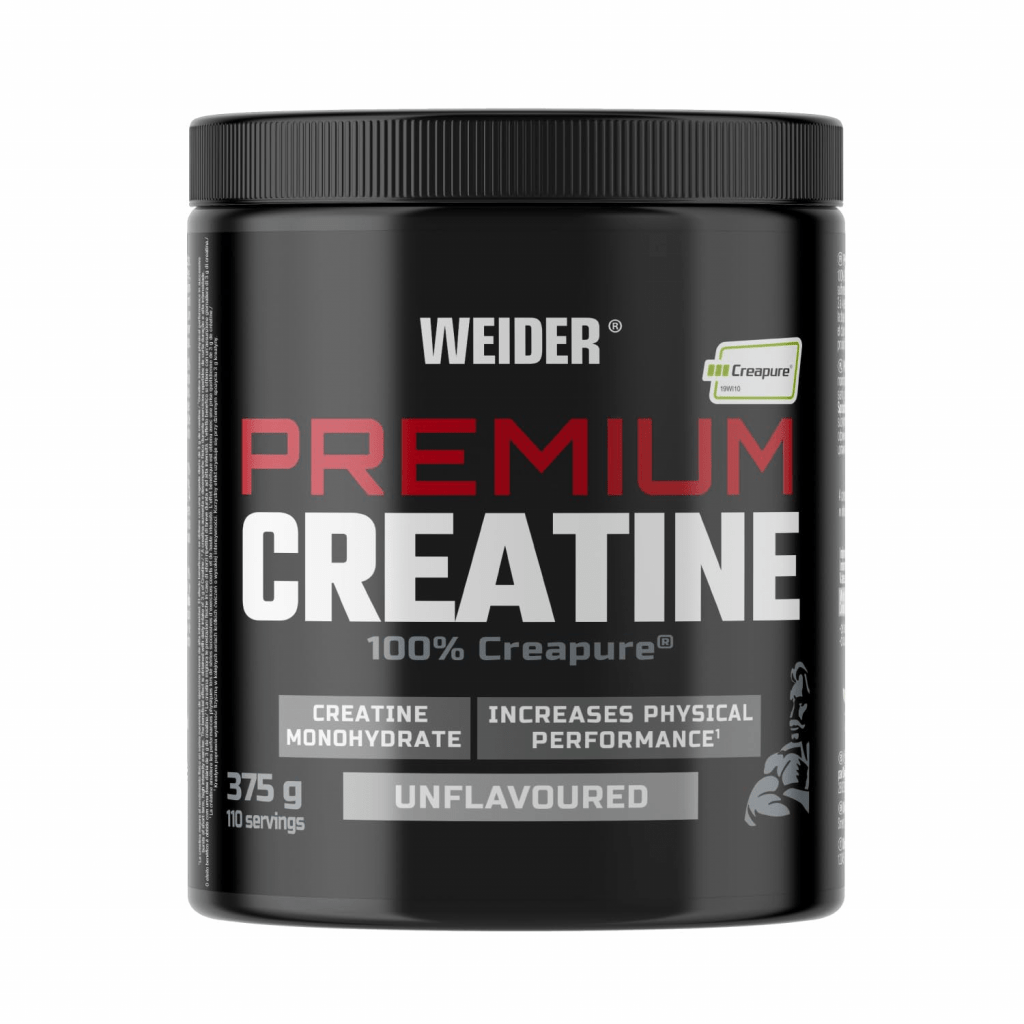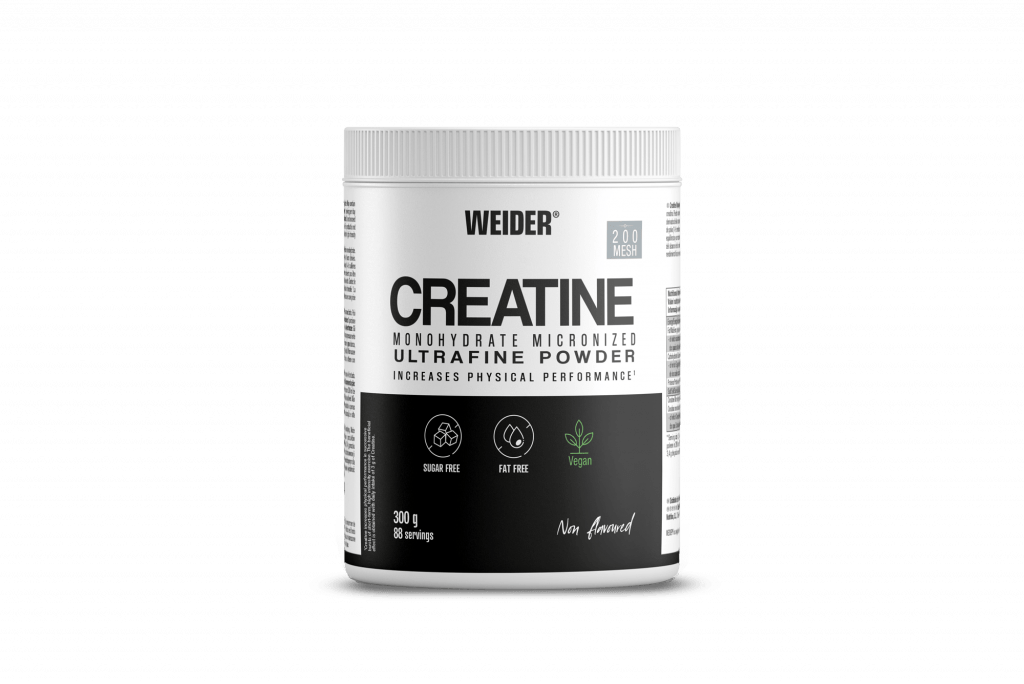La creatina es uno de los suplementos más demandado en los últimos años por aquellos que buscan mejorar su rendimiento deportivo, también es verdad que la Creatina es una de las ayudas ergogénicas que más publicaciones científicas presenta. Hoy en día, se calcula que se consumen más de 2,5 millones de kilogramos de creatina con unas ventas que superaron 200 millones de dólares. El punto de inflexión fue en los años 90, donde varios deportistas de élite confesaron que utilizaban el suplemento.
Más del 75% de los jugadores de fútbol americano consumen habitualmente creatina y el 90% de halterófilos y culturistas consumen creatina monohidrato. Pero incluso deportistas de la categoría de Linford Christie, quien ganó la medalla de oro en los 100 metros lisos en los Juegos Olímpicos de Barcelona 1992, o el nadador Mark Andrew Foster declararon públicamente que la usaban.
¿Qué es la Creatine?

Creatine was discovered in 1835 by the French scientist Chevreul, and the name derives from the Greek word kreas (meat). But due to problems in detection, it was not until 1847 that Liebig was able to confirm the presence of creatine as a constituent of meat.
A comienzos del siglo XX se iniciaron las investigaciones sobre la ingestión de este compuesto, y los primeros estudios evidenciaron que no toda la cantidad consumida se eliminaba por la orina, lo que sugería que el organismo retenía una parte. En 1923, Hahn y Meyer estimaron que el contenido total en un hombre de 70 kg era de aproximadamente 140 gramos.
The creatinecreatine, also called α-methyl guandine-acetic acid, is a nitrogenous amino acid. Endogenous creatine synthesis consists of three amino acids: glycine, arginine y methionine. Endogenous creatine synthesis is 1-2 g/d, and is mainly produced in the liver and in second place in the pancreas and the kidney. Approximately 1-2 g/d of creatine is obtained from dietary intake, mainly from fish and meat.

Las necesidades diarias de este compuesto se satisfacen a través de su absorción intestinal desde la dieta y por la biosíntesis de novo en el organismo. Su origen principal está en el hígado y el intestino, y se acumula en los tejidos que contienen creatín quinasa (CK). Aproximadamente el 90% se transporta al músculo esquelético mediante una proteína específica, en un proceso mediado por la ATPasa Na+/K+ dependiente de las concentraciones extracelulares de sodio y cloro.
En las células musculares en reposo, este compuesto es fosforilado por la acción de la creatín quinasa (CK) para formar fosfocreatina (PCr), utilizando el ATP generado por la glucólisis y la fosforilación oxidativa, lo que da lugar a la formación de ADP y PCr. Durante el ejercicio, cuando el ATP muscular se agota, el grupo fosfato de alta energía de la PCr se transfiere al ADP para regenerar ATP, y la sustancia original se recicla o se convierte en creatinina (Crn).
The daily creatine requirement for a 70 kg person is considered to be around 2g. A person following a Mediterranean diet usually ingests 0.25 to 1 g per day. Crn exchange is proportional to muscle mass and increases with high intensity physical exercise.
Approximately 95% of the total mass of creatine is found in skeletal muscle, the 5% are mainly found in the heart, brain and testicles.
Cr and PCr concentrations correlate with the glycolytic capacity of the different types of muscle fibres. In this respect, the PCr content is 5-30% higher in type II fibres than in type I muscle fibres. This is in agreement with the high levels of muscle PCr observed in sprinterswhose muscles also contain a higher proportion of type II fibres. In people over 70 years of age, there is a decrease in 5% concentrations of PCr, which may be explained by the decrease in type II muscle fibres with age.
How do I take creatine to improve performance?
Several studies advocate that in principle a loading dose of 0.3 g/kg/day would be necessary. This loading dose should be maintained within four to seven days. After the loading dose, a maintenance dose of 0.04-0.07 g/kg/day should be introduced. Other authors question whether the loading dose is necessary, as the same long-term results are obtained by consuming 0.04 or 0.03 g/kg/day from the start of supplementation.
The International Society of Sports Nutrition (ISSN) supports an acute or loading phase creatine intake of approximately 0.3 g/kg/day, maintaining this loading for at least three days. It appears that the ergogenic effect of creatine decreases after periods of more than 2 months of supplementation, so a 2-4 week washout is recommended, every 6-8 weeks of supplementation.
En cuanto al momento óptimo de ingesta, Noonan y colaboradores recomendaron que, durante la fase aguda y en días de entrenamiento, se reparta la dosis: 25% en el desayuno, 25% una hora antes de entrenar y 50% justo después. En días de descanso, bastaría con dividirla en cuatro tomas iguales. En la fase de mantenimiento, se aconseja una única toma tras el entrenamiento o con alguna comida en días sin actividad. Por su parte, Antonio y colaboradores compararon la ingesta antes y después del entrenamiento, concluyendo que hacerlo después mejora la masa libre de grasa, reduce la masa grasa y aumenta el rendimiento en la prensa de banca, medido por la repetición máxima (1-RM).
4o
Nowadays, many elite or popular athletes do not perform the initial overload and usually maintain a dose of 0.1g/kg/day. This is a more convenient way of supplementing creatine, with a duration of 4-6 weeks and a week's rest.
It is recommended that supplementation be accompanied by foods rich in medium to high glycaemic carbohydrates and protein, as creatine transport is mediated by insulin.
There are different forms of creatine, but most of these forms do not show the strength or performance gains that creatine does. monohidrato.
How does creatine help my performance?

Los efectos que presenta en el rendimiento deportivo son diversos y podemos señalar que los beneficios según las publicaciones son:
- Firstly, we will find benefits in explosive sports, in those exercises of 2-30 seconds of high intensity and that have intermittent short breaks between sets.
- Se objetiva en los estudios que tras 5-7 días de suplementación de creatina, se consigue una mejora en la fuerza y potencia muscular. Hay que destacar que este efecto se ha objetivado más en hombres que en mujeres. Esto puede ayudar a soportar una mayor carga de entrenamientos, mejorando el rendimiento físico en la competición. De hecho, un estudio de Claudino y cols. con jugadores de fútbol demostró que la suplementación con creatina prevenía la disminución de la potencia muscular conforme avanzaba la temporada.
- Thanks to the osmotic effect achieved with creatine (between 0.5-1 litre of weight can be saved), a better tolerance to sports at high temperatures can be achieved.
What side effects can I get from taking creatine?
- Weight gain. Most studies, between 60 to 70%, show an increase in body weight, around 1 to 2 kg. It has been observed that this increase in body mass could only partly be attributed to the increase in water volume by 55%.
- Muscle cramps. A few studies, almost anecdotal in nature, have reported the occurrence of muscle cramps, attributing it to a potentially adverse effect on the water-electrolyte balance. However, it would be more accurate to consider that the reason for such a process is the result of increased exercise intensity.
- Digestive disorders. Some studies have shown the appearance of gastrointestinal side effects after creatine administration, such as diarrhoea, stomach discomfort and vomiting. In my experience, when diarrhoea appears in athletes, I usually lower the dose slightly and increase it very gradually.
- Alteration of liver function. Therefore, we can currently indicate that, in healthy individuals, oral creatine supplementation at usual doses does not cause significant changes in liver function tests. However, it seems reasonable to monitor liver function in individuals on a creatine supplementation regimen.
- Alteration of renal function. Some studies have shown an increase in creatinine excretion after supplementation with Cr. However, these variations were not significant. However, renal function should be monitored in individuals undergoing high doses of creatine and, in general, creatine supplementation should be used with caution in individuals at risk of renal dysfunction.
- Effects on muscle enzymes. Elevations in creatine phosphokinase have been observed in some studies, but it is possible that this was due to increased sporting activity.
Como conclusión de este post, podría deciros que la Creatina es un suplemento deportivo que presenta evidencia suficiente para su utilización en el deporte profesional y popular, para mejorar el rendimiento. La creatina es un suplemento es seguro si se utiliza a la dosis adecuada (0,1g/kg/día) durante el tiempo adecuado (4-6 semanas) con su fase de descanso (1 semana). La aplicación de la Creatinina tiene beneficios tanto en deportes anaerobios, como aerobios.
BIBLIOGRAPHY:
"Creatine como aporte ergogénico en deportistas” Quirós-Romero, D. Bernabéu-Álvarez, C. Herrera Fajardo, L.SANUM 2022, 6(2) 64-70.
Ergogenic aids in sport. Santesteban Moriones V, Ibáñez Santos J Nutr Hosp 2017;34:204-215.
Course Pharmacology and supplementation in sport. Ergogenic aids I. Jordi Ribas Fernández 2009.
Ergogenic supplements: the evidence beyond a fad. Martorell et al. ARS MEDICA Journal of Medical Sciences Volume 46 number 2 year 2021.

Dr. Alberto Sacristán